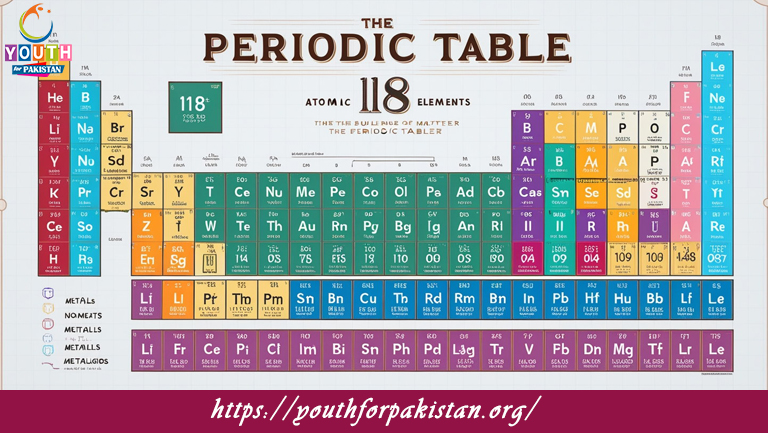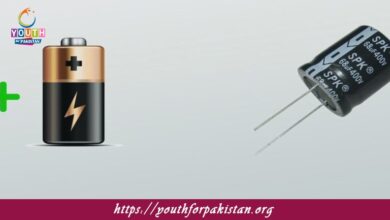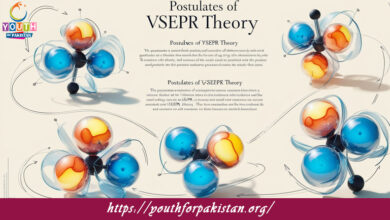Group2 Elements Physical And Chemical Properties MDCAT MCQs

Welcome to the Group2 Elements Physical And Chemical Properties MDCAT MCQs with Answers. In this post, we have shared Group2 Elements Physical And Chemical Properties Multiple Choice Questions and Answers for PMC MDCAT 2024. Each question in MDCAT Chemistry offers a chance to enhance your knowledge regarding Group2 Elements Physical And Chemical Properties MCQs in this MDCAT Online Test.
Which Group 2 element is the most reactive with water?
a) Beryllium (Be)
b) Magnesium (Mg)
c) Calcium (Ca)
d) Barium (Ba)
The ionization energy of Group 2 elements:
a) Increases down the group
b) Decreases down the group
c) Remains constant down the group
d) First decreases, then increases
Which Group 2 element has the lowest density?
a) Beryllium (Be)
b) Magnesium (Mg)
c) Calcium (Ca)
d) Strontium (Sr)
The solubility of Group 2 hydroxides in water:
a) Increases down the group
b) Decreases down the group
c) Remains constant down the group
d) First increases, then decreases
Which Group 2 metal reacts with nitrogen to form a nitride?
a) Beryllium (Be)
b) Magnesium (Mg)
c) Calcium (Ca)
d) Barium (Ba)
The lattice energy of Group 2 metal halides:
a) Increases down the group
b) Decreases down the group
c) Remains constant down the group
d) First increases, then decreases
The reaction of Group 2 metals with oxygen typically forms:
a) Metal oxides
b) Metal peroxides
c) Metal superoxides
d) Metal oxalates
Which Group 2 element is used in the construction of aircraft due to its strength and light weight?
a) Beryllium (Be)
b) Magnesium (Mg)
c) Calcium (Ca)
d) Strontium (Sr)
The solubility of Group 2 sulfates in water:
a) Increases down the group
b) Decreases down the group
c) Remains constant down the group
d) First increases, then decreases
Which Group 2 metal reacts most vigorously with water?
a) Calcium (Ca)
b) Strontium (Sr)
c) Barium (Ba)
d) Magnesium (Mg)
The basicity of Group 2 metal oxides:
a) Increases down the group
b) Decreases down the group
c) Remains constant down the group
d) First decreases, then increases
Which Group 2 element has the highest melting point?
a) Beryllium (Be)
b) Magnesium (Mg)
c) Calcium (Ca)
d) Barium (Ba)
The reaction of Group 2 metals with acids produces:
a) Metal oxides
b) Metal salts and hydrogen gas
c) Metal hydroxides
d) Metal carbonates
The color of Group 2 metal flame tests typically:
a) Shows a range of colors
b) Is colorless
c) Shows a characteristic color for each metal
d) Is black
The Group 2 metal used in fireworks for its bright red flame is:
a) Barium (Ba)
b) Magnesium (Mg)
c) Calcium (Ca)
d) Strontium (Sr)
The Group 2 element that forms a white precipitate with sulfuric acid is:
a) Calcium (Ca)
b) Magnesium (Mg)
c) Barium (Ba)
d) Strontium (Sr)
Which Group 2 element has the least solubility in water?
a) Beryllium (Be)
b) Magnesium (Mg)
c) Calcium (Ca)
d) Strontium (Sr)
The Group 2 metal that is commonly used in fireworks to produce a bright white flame is:
a) Calcium (Ca)
b) Magnesium (Mg)
c) Barium (Ba)
d) Strontium (Sr)
Which Group 2 metal forms a basic hydroxide when reacting with water?
a) Beryllium (Be)
b) Magnesium (Mg)
c) Calcium (Ca)
d) Strontium (Sr)
The Group 2 metal that forms a sulfate with low solubility in water is:
a) Calcium (Ca)
b) Magnesium (Mg)
c) Barium (Ba)
d) Strontium (Sr)
The reactivity of Group 2 metals with acids generally:
a) Increases down the group
b) Decreases down the group
c) Remains constant down the group
d) First increases, then decreases
The Group 2 element that forms a white precipitate with hydrochloric acid is:
a) Barium (Ba)
b) Magnesium (Mg)
c) Calcium (Ca)
d) Strontium (Sr)
Which Group 2 metal has the highest density?
a) Beryllium (Be)
b) Calcium (Ca)
c) Strontium (Sr)
d) Barium (Ba)
The Group 2 metal used in flares and fireworks for its characteristic yellow flame is:
a) Calcium (Ca)
b) Magnesium (Mg)
c) Strontium (Sr)
d) Barium (Ba)
The Group 2 metal that forms an insoluble sulfate in water is:
a) Calcium (Ca)
b) Magnesium (Mg)
c) Barium (Ba)
d) Strontium (Sr)
Which Group 2 element reacts with water to form a solution that is mildly alkaline?
a) Beryllium (Be)
b) Magnesium (Mg)
c) Calcium (Ca)
d) Barium (Ba)
The solubility of Group 2 carbonates in water:
a) Increases down the group
b) Decreases down the group
c) Remains constant
d) First increases, then decreases
The Group 2 metal used in alloys for aerospace applications due to its lightweight properties is:
a) Calcium (Ca)
b) Beryllium (Be)
c) Magnesium (Mg)
d) Strontium (Sr)
Which Group 2 element forms a basic oxide that is soluble in water?
a) Beryllium (Be)
b) Magnesium (Mg)
c) Calcium (Ca)
d) Strontium (Sr)
The chemical property that increases down Group 2 is:
a) Reactivity with water
b) Lattice energy of metal halides
c) Ionization energy
d) Melting point
The metal used in the production of fireworks to produce a green color is:
a) Barium (Ba)
b) Calcium (Ca)
c) Magnesium (Mg)
d) Strontium (Sr)
Which Group 2 metal has the highest atomic radius?
a) Beryllium (Be)
b) Calcium (Ca)
c) Magnesium (Mg)
d) Strontium (Sr)
The Group 2 element that forms a red solution when reacting with nitric acid is:
a) Barium (Ba)
b) Calcium (Ca)
c) Magnesium (Mg)
d) Strontium (Sr)
The metal which forms an amphoteric hydroxide in Group 2 is:
a) Beryllium (Be)
b) Calcium (Ca)
c) Magnesium (Mg)
d) Barium (Ba)
The solubility of Group 2 nitrates in water:
a) Increases down the group
b) Decreases down the group
c) Remains constant down the group
d) First increases, then decreases
Which Group 2 metal reacts with water to form a strongly alkaline solution?
a) Barium (Ba)
b) Magnesium (Mg)
c) Calcium (Ca)
d) Strontium (Sr)
The Group 2 metal that forms a colored salt in a flame test is:
a) Calcium (Ca)
b) Barium (Ba)
c) Magnesium (Mg)
d) Strontium (Sr)
The Group 2 metal that forms a white precipitate with dilute hydrochloric acid is:
a) Barium (Ba)
b) Calcium (Ca)
c) Magnesium (Mg)
d) Strontium (Sr)
Which Group 2 metal forms a salt that is commonly used in medicinal applications to relieve indigestion?
a) Magnesium (Mg)
b) Barium (Ba)
c) Calcium (Ca)
d) Strontium (Sr)
The Group 2 metal that is used in the production of cement is:
a) Beryllium (Be)
b) Calcium (Ca)
c) Magnesium (Mg)
d) Strontium (Sr)
If you are interested to enhance your knowledge regarding Physics, Chemistry, Computer, and Biology please click on the link of each category, you will be redirected to dedicated website for each category.





